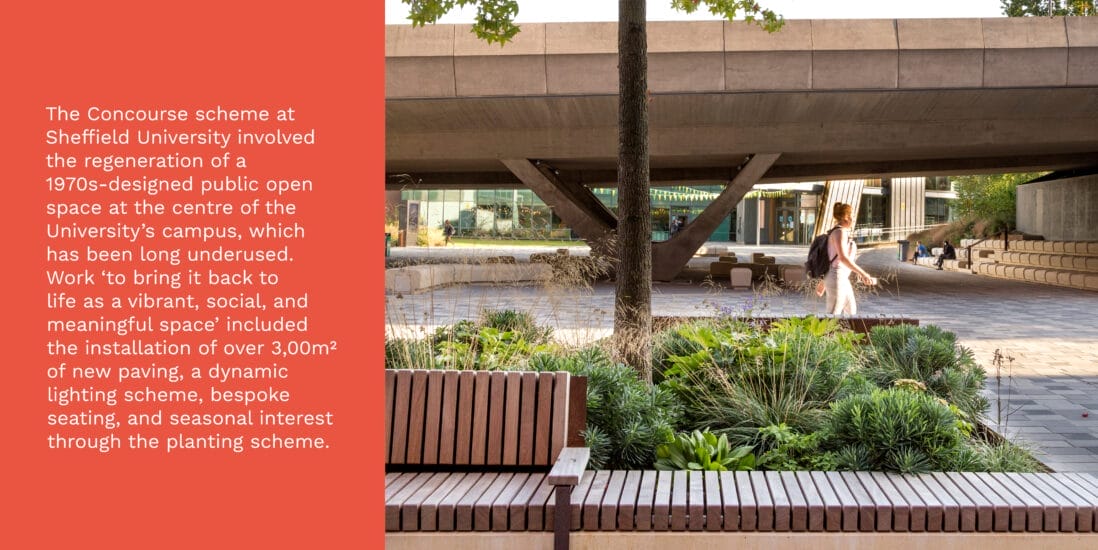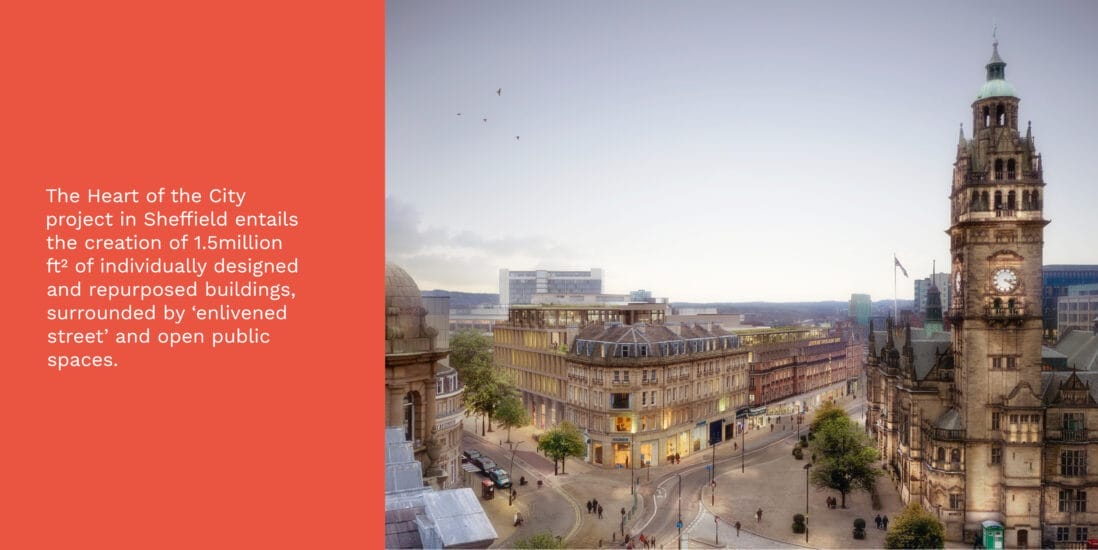
This month Neil Orpwood, Associate Director – Healthcare featured in Healthcare Estates Journal exploring that healthcare needs to ‘take a more holistic view, creating healthy environments that champion local community care.’
Since the pandemic the pressure on hospitals has been immense and it’s put the spotlight firmly on hospital programmes and how they’re being used.
Now is the time to look more holistically and create healthy environments that champion local community care, helping take the pressure off hospitals. By better utilising vacant space in town centres for rehabilitation hubs and promoting the use of hospitals as a last resort we can ensure that bed spaces are reserved for those most in need.
Even before the current pandemic, town centres were seeing huge reductions in footfall, with the consequential increase in un-let retail units. As each of the lockdowns over the last 18 months has taken hold, we’ve seen an increased preference for shopping locally (away from the large supermarkets) and this in turn provides the opportunity for healthcare to come to the high street. Rather than making a special trip to resolve a health issue, providing GP services, and even specialist clinics on the high street could make us all more aware of our health before it becomes a more problematic issue. Beales Department Store in Poole is a great example of how well this can work on a large scale, but this could be just as successful in smaller high street units.
‘Health Creation’
As designers we have a responsibility to inspire healthy habits through town centre design, we call it ‘health creation’. Creating accessible areas for exercise and play within town centres and ensuring facilities are accessible to all regardless of age or financial situation is just the start. Links to nature and green space encourage outdoor exercise and investment in canopies and pavilions to counteract the weather encourage more outdoor interaction. There’s also an opportunity to create new partnerships across towns with fitness, rehabilitation and recreation providers to support town centre health and support local businesses, and in fact the Department of Health & Social Care, Natural England and DEFRA (among others) are one year in to a 2 year, £5.77m funded programme, to test exactly these kinds of opportunities across 7 sites throughout England, (including Surrey Heartlands Health & Care Partnership). The intent is that Green Social prescribing will allow rural and urban areas alike, by supporting patients to engage; in nature-based activities, helping those living in deprived areas, people with mental health conditions, those experiencing distress, loneliness or anxiety, to exploit the proven benefits of regular access to green spaces.
Digital and local healthcare hubs
Illness prevention should also be key. The introduction of digital and local healthcare hubs could encourage a ‘digital first’ approach that brings healthcare to the home and makes it fully accessible. With the increase in vacant space on our highstreets there’s an opportunity for these spaces to become local hubs that not only drive footfall through the high street but also link healthcare to entertainment and leisure facilities promoted in the town centre. This could be anything from libraries to community specific activity spaces based on real need and not assumed. These space requirements can be identified through existing embedded service providers, for example Food Banks.
Supported living
Supported living could also relieve pressure on hospitals through the development of town centre living that’s focused on the elderly (but not exclusively) to provide alternative solutions to them remaining in hospital beds. By creating different levels of support to allow for ‘right-sizing’ as well as full time care, these facilities should be located within easy walking distance of the town centre to allow residents to choose their level of independence. This shouldn’t mean the provision of dedicated ‘Old people’s homes’ but more the supply of cross generational affordable rent, adaptable and flexible flats. They could be available to key workers, supported family living, and elderly care alike, with good access to not only the new local healthcare facilities but also to green space and work.
Let’s also de-stigmatise medical treatment through co-location, by creating links with local community facilities to remove the perceived barriers around healthcare. This has been achieved with various levels of success in Health Centres across the UK but invariably still provides a place for treatment only. However, the best examples work when clinics have been integrated in easy to access and stimulating environments (such as the successful Ashford and St Peter’s Hospital NHS Trust Outpatient Physiotherapy Clinic relocating to the River Bourne Club in Chertsey). Easy links for the public by proximity to fitness facilities and wellbeing centres with a focus on rehabilitation should be considered and the promotion of co-location across the town through public realm intervention and design.
More accessible community settings
This moving of outpatient clinics from hospitals to more accessible community settings is already being considered across some councils, integrating primary and community care and delivering a new range of buildings to improve and replace health centre facilities. Key though is to not miss the opportunity to provide services that could include links to wider existing community services, schools and colleges, encouraging an understanding that health is all our business, not just Health Professionals’. By encouraging children to understand the impact of nutrition, mental health awareness, and exercise on their wellbeing, through direct involvement with these new community health nodes will make a huge difference to all their lives.
Healthy transport
Healthy transport is an obvious solution too. All towns should be considering the reduction of usage of cars, ensuring enough public transport stops, safe and welcoming and shelter to wait. Reviewing cycle and pedestrian connections should also take place to ensure they’re better interlinked and more visible. Promoting active travel solutions and keeping them well maintained throughout the public realm, really does provide many more benefits than just being able to park by the front door. While we all work to resolve our need to have a vehicle each, even a short walk from the easily accessible carpark to our destination, through well designed landscaped public realm can provide that small moment to reset and mentally prepare, reducing stress and improving our ability to cope.
Finally, let’s place true value on the public realm experience and ensure that it is inclusive and accessible to all. Councils should be setting targets to improve the urban greening factor and ensure that residents universally have access to greenspace, close to home and work.
By including all these elements to define a holistic masterplan at local level, building out from the Acute Hospital Estate, encompassing existing successful Borough Council service provision, as well as county wide connections, we can.
You can read the HEJ article here.
Can architecture and public realm design inspire a healthier community?
Originally intended as the development of a new health campus in Surrey, research into the site, town and its inhabitants led to a much more comprehensive development opportunity incorporating the library, community services, new socially supportive residential apartments, and public realm transformation.
These projects have the opportunity to transform tired high streets and capitalise on wider improvements being made in towns’ core offerings to encourage comprehensive redevelopments which will create a new model for social wellbeing and community wellness.







